I watched the movie Tammy last night. It stars the fabulous Melissa McCarthy, one of my favorite all-time actors. I started thinking about how amazing to see a plus-sized actress for the first time. I know, I know, there are “plus-sized” actresses and models all over the place, right? Well, not exactly. Those women dubbed as “plus sized” are typically size 8-12, under what the common vernacular might call plus-sized. McCarthy, though, who actually does wear plus-sized clothing (perhaps until her recent weight loss), plays deeply complex characters in many of her movies. While weight is often a topic her characters discuss at some point, fat jokes and laughing at her are not usually part of the comedy of her work. She is not funny because she challenges our ideas of who should be on the screen, or who is worthy of our fandom (though those are true). She is funny because she plays characters that are deeply relatable and violate our expectations from the movies we watch. Tammy is fucked up, funny, complicated, poor, lovable, confused, and on and on.
The character has been criticized as being a terrible stereotype of overweight people (Tammy is often sloppy, dirty, and loud). For example, you can see the video below:
Is Tammy a stereotype? Or are we just too afraid to welcome a character to the big screen that we as a society have declared unworthy? Yes, she is loud. She is sloppy. Is that saying all overweight people are both of those things? If that’s so, we are caught in a Catch-22 where everyone we portray on screen must be quiet, clean, and thin because anything outside of that norm is a stereotype. What’s important is that characters have depth, aren’t spectacles, and don’t damage other people, among other things. Representation is complex. I think Tammy is fucking awesome. And I like that I can see someone overweight, driving a shitty car, and hanging out with her grandma on TV.
At any rate, this is a long way of getting to my topic: fat avatars. I say fat, not plump or big, because I don’t think it needs to be shameful. Fat Studies, “an interdisciplinary, cross-disciplinary field of study that confronts and critiques cultural constraints against notions of ‘fatness’ and ‘the fat body,’ explores fat bodies as they live in, are shaped by, and remake the world, and creates paradigms for the development of fat acceptance or celebration within mass culture.” It’s been used as an insult far too long, and fat studies works to take it back, exploring fat as a category, a label, a role, rather than an insult. But that’s not what this is about; we aren’t talking about meat space bodies, we’re talking about virtual ones.
When Sims first allowed you to make bigger bodies, I thought it was the greatest thing that had ever happened. The goal of Sims for me was to always make avatars exactly like me. I had my sim love the activities I loved, eat the foods I ate, pursue the job I wanted. It was me on the screen, except I couldn’t fail or fuck up. Then I could make a chunky sim and see myself on the screen. For those gamers who are white and male and handsome and 30-something, you may not understand just how much it means to be able to have a character you can relate to because you always have. Obviously, you don’t need to look exactly like the character on the screen to identify with them, but it sure doesn’t hurt.
So do fat people want to play fat characters? No, not necessarily. We want to play interesting, complex characters. If a character is a ninja that climbs walls and jumps across buildings, then their body should reflect that athletic lifestyle. It a character is supposed to be portraying the struggles one goes through as an outcast in adolescence (Life Is Strange, cough cough), then they most likely aren’t going to look like a young supermodel. They will be complex visually as well as emotionally. At the very least would games be better if we could cast overweight and fat and plump and chubby characters as something other than the evil antagonist? I certainly think so.
The connections between weight and gender are deep and complex as well. We are told again and again through sitcoms and cartoons that wives are slim, pretty, accepting, if not a little naggy (Lois Griffin, Marge Simpson, Debra Barone, Carrie Heffernan) and men are overweight underachievers (Peter Griffin, Homer Simpson, Ray Barone, Doug Heffernan). Obviously it’s not ideal to be either of these characters, but the fact that the fat wife and the skinny husband rarely, if ever, exists in a long-running series is telling. That said, let’s look at how the video game industry has handled overweight and fat characters:
Bob is an overweight character in Tekken 6. He has engineered his body to optimum speed and durability. He is an incredibly fast character, which is a nice violation of what the stereotype of the overweight body can do. Can Bob really be considered an overweight body? Since he has genetically engineered himself to be this way? I think so; and I think this calls into question some of our assumptions about fat bodies, such as the Tammy example of being sloppy and slow.
Darlene Fleishermacher
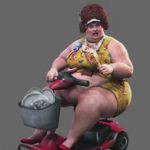
Darlene is a boss in the game Dead Rising 3. She is supposed to be the embodiment of sloth, one of the deadly sin. She is clearly referencing stereotypes of the People of Walmart phenomenon (which I shudder to link to). People of Walmart is a venue for people to post pictures of people at Walmart, usually overweight, wearing ill-fitting clothes, and otherwise being poor and looking poor.

Compare Darlene to “Effective Shopper” in the game Happy Wheels. While some may argue Tammy is stereotypical in many of the same ways as Darlene, I don’t buy it. Tammy has agency, a personality, and likeability. Hell, I want to be Tammy at some points in the movie. She has depth and a realness to her. Darlene is truly a caricature: a poor, unkempt, fat person who is going to destroy you.
Fat Princess
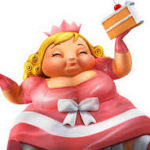
Fat Princess is probably one of the most well known fat video game characters, certainly the most well known fat female video game character. She is the star of Fat Princess, a game where you and your army are attempting to rescue her from the enemy. The enemy, however, has stuffed her with food to make her difficult to save. Fat Princess actually has very few appearances in her own game, as she is locked up behind castle walls. She more serves to set the comedic scene for the game, and her story is pretty tragic, if you think about it. Obviously the game has been accused of being sexist and weightist. I certainly don’t think the devs were trying to violate the “save the princess” trope by putting a different kind of princess behind castle doors in an effort to expose the triviality and damage those narratives can do. I imagine they thought: hey, wouldn’t it be funny if the princess was fat and thus harder to save?
Princess Theradras
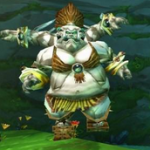
Hitting on points from the previous two characters, Princess Theradras is both a princess and an evil boss in World of Warcraft. Princess Theradras also has interesting tribal features that suggests she is raced in some way. She is a boss residing in Maradaun. She was aligned with the earth elementals before she was “tainted,” though that’s about all we get of her story. It is unclear if her size has anything to do with her story or if the developers just thought she looked cool. I remember the first time I fought her. I didn’t even really put together that she was female (a combination of me not reading the quest text and having terrible graphics).
Honorable mentions:
Earl, from Toejam and Earl is one of my favorite characters in a video game. He is laid back, cool, and has positives and negatives to his body size (he is slow, but has more health points). He is one of the few protagonists that are overweight.
Dr. Robotnik, from Sonic the Hedgehog is another interesting overweight antagonist. He is particularly noteworthy because he first debuted in 1991, when popular gaming was still in its infancy.
Eunice from Runefactory: Frontier is a pretty straightforward overweight character in that you can woo her with candy and she “babbles.”
Madam Flurrie is a seemingly raced and weighted character in Paper Mario: The Thousand-Year Door.
There are more, of course, and this is only a broad overview; any one of these characters could provide rich material for analysis, but in light of Fat Studies work, each is interesting for what they do, or do not do, within their roles inside each game.

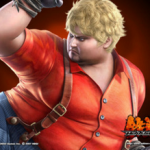
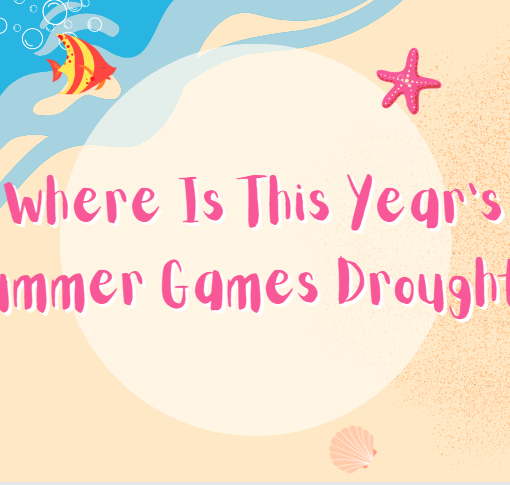

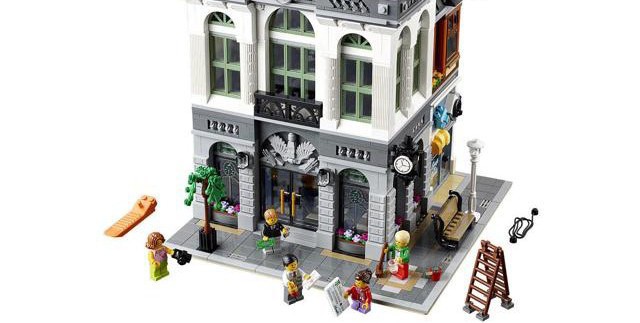

4 thoughts on “Fat Avatars in Games and Popular Media”
Fighting games is where I have seen the most fat male bodies lately, particularly Birdie in Street Fighter V (king of my heart *~*) and Rufus in Street Fighter IV.
Someone else mentioned Rufus too! He would have been a good one to talk about– especially because he was originally designed to be slim. I didn’t play SF4 otherwise I probably would have talked about him too. Maybe I’ll do a part 2!
Surprised you didn’t mention Ellie from Borderlands 2. She was written in part as a direct response to certain stereotypes about fat people, I think.
I definitely should have talked about Elle. I don’t know if she was written as a response to stereotypes about fat people as much as stereotypes of how women look in games. The devs said they wanted a character that violated what we expect from a woman in a game without making her into a spectacle, which is pretty damn cool if you ask me.